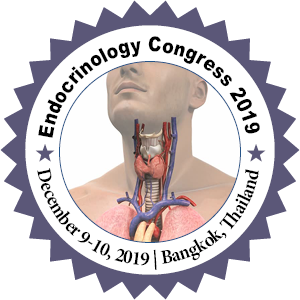
Toluwalope E. Adeyemi1
Discipline of Human Physiology, School of Laboratory Medicine and Medical Sciences, College of Health Sciences, University of KwaZulu-Natal, Private Bag X54001, Durban, 4000, South Africa.
Title: Maternal fat consumption may induce oxidative challenge in the offspring with severe reproductive consequences
Biography
Biography: Toluwalope E. Adeyemi1
Abstract
High energy diets are commonly associated with cellular oxidative damage and certain dysregulation in metabolic functions. However, little is known about the impact of maternal fat consumption on endogenous modulation of antioxidant enzyme network and reproductive profiles of their progenies. In the present study, we investigated the effects of Quercetin-3-o-rutinoside (QR) on maternal high fat diet (HFD)-induced oxidative changes and altered hormonal functions in offspring rats. Research was approved by the Animal Research Ethics committee university of Kwazulu-Natal. Fifty-six (n=56) female Sprague Dawley rats (180-200g) were divided into two groups (n=28/group), fed with either normal diet (ND) or 45% energy high fat diet (HFD) for eight weeks and then mated. Post conception, rats were further divided into four groups each, of which two groups continued with ND or HFD while the remaining groups received either QR (150mg/kg) or HFD+QR. They were killed in batches with the first set sacrificed on gestation day (GD) 19, while the second group was allowed to litter naturally, and pups killed at postnatal day (PND) 21, 28 and 35. We assessed changes in body weight (BW), oral glucose tolerance, hormonal levels in hypothalamus (GnRH), plasma (LH) and testicular levels of testosterone via enzyme linked immunosorbent assay (ELISA), as well as quantification of markers of oxidative stress (catalase, superoxide dismutase (SOD), glutathione (GPx), nitric oxide (NO) and malondialdehyde (MDA)) in placenta and liver of dams and offspring. HFD-fed rats showed increases in body weight but sensitive to oral glucose. Our data also showed significant increases in liver MDA levels in placenta of HFD-fed dams and liver of HFD offspring at PND 21. SOD activity was decreased in the liver and placenta of all treatment groups of G19 dams, whereas HFD-treated postpartum day (PPD) 21 dams exhibited significant increases in both SOD and catalase enzymatic activities in the liver. Moreover, GPx concentration was increased in QR offspring at D21, decreased in HFD-treated groups at PND 28, and increased in all three groups at PND 35. Liver NO level was also increased in HFD GD19 dams and significant decreases in placenta and liver of HFD+QR PPD21 dams. Hormonal analysis further showed significant decrease in hypothalamic GnRH of HFD offspring at PND 21 and 28. We observed an initial rise in GnRH concentration in QR at PND 21 which later returned to low levels in the offspring throughout the study period. Also, plasma LH was decreased by either HFD or QR at PND21, as well as significant decrease in testosterone levels in HFD offspring at PND 28 which appears reversed by QR. The results indicate that maternal nutritional drift may induce oxidative challenge in the offspring, leading to hypothalamic-pituitary-gonadal axis dysregulation with severe reproductive consequences.

